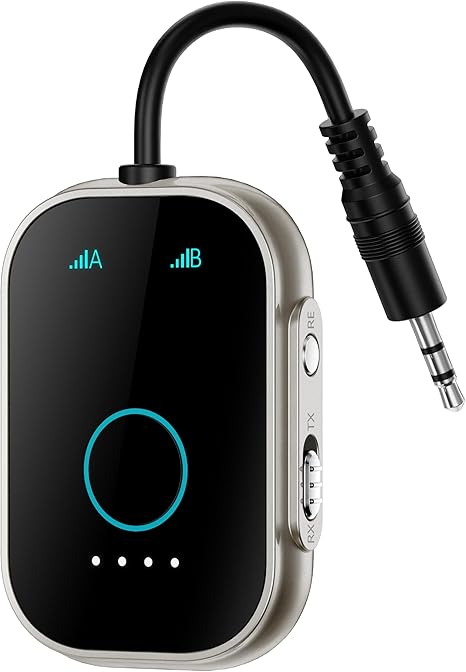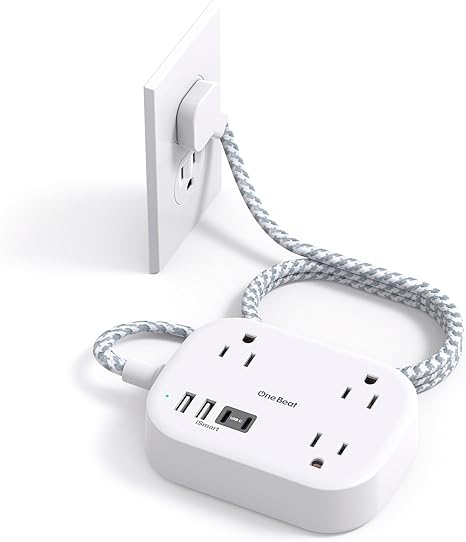Long Haul Flights Survival Tips & Essentials
Long-haul flights in economy class can feel like a marathon where every mile brings new discomforts—aching backs, stiff necks, and the kind of exhaustion that makes you question why you ever thought air travel was glamorous.
But here’s the good news: with the right preparation and a few clever strategies, you can transform your experience from a dreaded endurance test into something much more manageable (or dare I say, enjoyable?!)
Whether you’re a seasoned traveler or gearing up for your first long flight, these tips will help you arrive at your destination feeling refreshed and ready to take on whatever comes next.
Let’s dive into the best advice for surviving (and even thriving) on long-haul flights!
The Long Haul Challenge You’re Up Against
We know the name looks self-explanatory. But how long is too long?
Is a transatlantic flight long-haul? It sure seems so.
What about a flight from Boston to Los Angeles? Is that long enough?
Here’s the breakdown of flight times:
- Short-Haul: Less than 3 hours
- Medium-Haul: 3–6 hour jobbie
- Long-Haul: 7–12 hours
- Ultra-Long-Haul: 12+ hours (like New York to Cape Town)
Remember how miserable and cranky the last regional flight you took made you feel? When we say you need some long-flight tips to survive, we aren’t kidding!
Common Struggles During Sky-High Marathons
Sitting for hours in a packed tube (more commonly known as an airplane) can wreak havoc on your body. Noises, B.O. from your neighbor, bathroom lines, and flight delays are all enough to ruin the mood.
Here’s the most common discomforts of flying:
- Dehydration: The dry cabin air can quickly sap the moisture from your body, leaving you feeling parched and fatigued.
- Cabin Pressure Effects: The pressurized environment can play tricks on your ears and sinuses, causing discomfort or even mild pain.
- Digestive Discomfort: It’s not just you—flying can make anyone feel bloated and gassy. The altitude and cabin pressure can slow down digestion, leading to that all-too-common “airplane belly.”
- Jet Lag: Red-eye flights can leave you struggling to adjust to a new time zone, turning your sleep schedule upside down and making you feel groggy for days.
- DVT (Deep Vein Thrombosis): Sitting for extended periods can cause blood to pool in the deeper veins of your legs, which may lead to clotting. While it sounds alarming, it’s manageable with the right precautions, and we’ve got tips to help you reduce this risk and keep your circulation flowing smoothly.
These challenges might sound daunting, but don’t worry—many travelers before you have successfully navigated them! With the right strategies, you can minimize these risks and arrive at your destination feeling much better.
Why Preparation Becomes Your Best Co-Pilot
If there’s one key takeaway, it’s this: preparation is everything. Being well-prepared can transform your long-haul flight from a struggle into a more comfortable experience.
Consider this: if the in-flight entertainment doesn’t suit your taste, there’s no need to resign yourself to watching the flight map inch across the ocean. With a little foresight, you’ll have your own selection of movies, books, or games to keep you entertained.
If the meal service is running late or doesn’t appeal to you, no problem—you’ve packed your favorite snacks to keep hunger at bay.
Temperature fluctuations? No sweat. You’re dressed in layers, ready to adjust as needed.
Need to catch some sleep? You’ve wisely chosen comfortable clothing, making it easier to relax.
Worried about looking presentable upon arrival? Not an issue—you’ve packed a change of clothes, so you can freshen up before landing.
In essence, effective preparation can significantly reduce the stress and discomfort of long flights, allowing you to handle whatever comes your way with ease.

Unlock 10% Off Your First Explorer Chick Trip!
Join our email list to receive a discount code to explore the most beautiful destinations in the US and abroad.
Your Long-Flight Survival Kit With Essential Tips
You probably already know the general flying tips that apply to any flight, whether it’s a quick hop or a marathon journey across continents:
- Book Early for Good Seats: Securing your seat early gives you the best chance of snagging a spot with extra legroom or closer to the front, where you can disembark faster.
- Download the Airline App: The airline’s app is a must-have for checking in, tracking your flight, and managing your boarding pass. It’s also handy for any unexpected changes or updates.
- Wear Cozy Clothes: Comfort is key on a flight, especially a long one. Soft, breathable fabrics and relaxed fits will help you settle in for the journey.
- Use the Bathroom Before You Board: Once that seatbelt sign goes on, you might be stuck waiting. A quick trip to the bathroom before boarding can save you the discomfort of holding it in during takeoff.
- Be Polite to the Flight Attendants: A little kindness goes a long way. Being courteous to the crew can make your flight experience smoother—and who knows, it might even get you an extra snack or two.
Got those basics down? Great! Now let’s dive into the more advanced strategies that will truly make a difference on your long-haul flight.
Choosing Your Sky-High Throne for Maximum Comfort
“Come prepared” is the golden rule for long-haul flights, but choosing the right seat is a close second.
But, what’s the “right” seat? The answer depends on your personal preferences and priorities. What might be a dream seat for one traveler could be a nightmare for another. But don’t worry, we’re here to help you figure out the best option for your flight!
First things first: let’s agree that middle seats are off the table. (Seriously, they’re nobody’s first choice.) Now, let’s dive into the pros and cons of window, aisle, and back seats—and we’ll even throw in a clever seating hack.
Window Seat
The window seat is often the first to go, and for good reasons. But as attractive as it seems, it’s not without its challenges, especially on a long flight.
Pros:
- Stunning Views: If you love watching the clouds and the world below, the window seat offers unbeatable views, perfect for your Instagram stories.
- Leaning Comfort: You’ve got a wall to lean against, making it easier to catch some sleep without worrying about bumping into a neighbor.
Cons:
- Bathroom Access: The downside? You’re boxed in. If nature calls, you’ll have to wake your seatmates to get out, which can be awkward and anxiety-inducing, especially if they’re asleep.
Aisle Seat
If you value freedom of movement, the aisle seat might be your best bet. However, it comes with its own set of trade-offs.
Pros:
- Easy Access: No need to worry about bothering anyone when you need to stretch your legs or use the bathroom—you’ve got direct access to the aisle.
- Quick Exit: You’ll be one of the first to disembark, which is a huge plus if you have a tight connection or just want to get off the plane ASAP.
Cons:
- Interruptions: The aisle seat is a high-traffic zone. Expect to be nudged by the drink cart or have people brushing past you, which can be annoying if you’re trying to sleep.
- Less Privacy: You’re more exposed to the cabin activity, which can make it harder to relax.
Back Row Seat
The back row often gets overlooked, but it can actually be a solid choice for long-haul flights, depending on your priorities.
Pros:
- Quieter: With fewer passengers and less foot traffic, the back of the plane can be quieter, offering a more peaceful environment.
- Close to the Galley: You’re near the galley, so you’ll have easier access to snacks and drinks, and a bit more room to stretch your legs.
Cons:
- Last to Disembark: You’ll be among the last to leave the plane, which can be frustrating if you’re eager to get going.
- Limited Recline: Depending on the aircraft, the last row may have limited recline, which could make it less comfortable for sleeping.
Now that you’ve selected your seat, let’s talk about our flight essentials…
Tech Essentials for a Smooth Journey
When you’re gearing up for a long-haul flight, the right tech can be a game-changer, transforming your journey from a tedious marathon into a more enjoyable experience. Here are the must-have gadgets that will help you stay powered up, organized, and entertained during those long hours in the air.

1 Battery Bank
A long-haul flight can easily outlast the battery life of most smartphones, tablets, or other devices. That’s where a reliable portable charger comes in. The Biolite is our top pick—it’s compact, powerful, and equipped with multiple charging ports, so you can keep all your devices juiced up throughout the flight. Whether you’re binging on your favorite series, listening to podcasts, or just keeping in touch with loved ones during layovers, a good battery bank ensures you’re never caught with a dead device.

2 Octopus Charging Cord
Cables can quickly become a tangled mess, especially when you’re confined to a small airplane seat. Enter the Octopus Charging Cord (or any good multi-connector cable). This all-in-one cable features multiple connectors, including USB-C, Lightning, and Micro USB, so you can charge all your devices with just one cord. No more digging through your bag to find the right cable—just plug in, charge up, and relax. It’s a small investment that can save you a lot of hassle, keeping your space tidy and your devices powered.

3 Noise-Canceling Headphones
Airplanes are notoriously noisy environments, with engine hums, crying babies, and chatty neighbors all contributing to the cacophony. A good pair of noise-canceling headphones is essential for maintaining your sanity. Make sure to pack a 3.5mm jack adapter if your headphones use a different connection, as most in-flight entertainment systems still rely on the standard headphone jack. This way, you can use your own high-quality headphones instead of the flimsy airline-provided ones, enhancing your overall in-flight experience.

4 Bluetooth Transmitter
While noise-canceling headphones are fantastic, many of the best models today are wireless, and most airplanes are still stuck in the wired age. Enter the Bluetooth transmitter—a small device that plugs into the plane’s headphone jack and connects to your Bluetooth headphones. With this nifty gadget, you can enjoy the in-flight entertainment without sacrificing the comfort and quality of your own headphones. The Twelve South AirFly is a popular choice for its reliability and ease of use, ensuring you don’t have to compromise on audio quality or comfort.

5 Tablet or E-Reader
While most airlines offer a range of movies and TV shows, the selection can be hit or miss. Bringing along a tablet loaded with your favorite content or an e-reader filled with books ensures you’ll never be bored. Plus, tablets are versatile—you can use them for entertainment, staying connected, or even getting some work done if you need to. An e-reader like the Kindle Paperwhite is perfect for those who prefer reading to pass the time, with a long battery life and a screen designed for easy reading in various lighting conditions.

6 Travel-Friendly Power Strip
Airplanes often have limited power outlets, especially in economy class. A travel-friendly power strip with multiple outlets and USB ports allows you to charge multiple devices simultaneously, without having to fight over the single outlet with your seatmate. Look for compact designs that fit easily in your carry-on and offer surge protection for added safety.
Making Time Fly When You’re Having Fun on Board
Time flies when you’re having fun, and that’s a scientific fact.
Sure, there’s only so much you can do when restricted to a 16” seat with about 2’ of legroom. We have some ideas on what to do on a long flight, though.
Digital Diversions to Keep Your Entertained and Sane
The obvious answer is sitting in your pocket. Or maybe you’re holding it in your hand right now — I don’t know your browsing habits.
Either way, download media on your device. The LOTR trilogy, comedy podcasts, Beyonce’s entire discography, a binge-worthy documentary, or trashy novels on Kindle (a big part of our sleep routine, TBH). Dealer’s choice.
If you’ve got a tablet, we recommend this airplane tablet holder which can transform your iPad into a movie screen.
The trick is to download too much media. Guess how much you could consume during the trip, and go for 50% more. We were actually going to say: “Double it,” but we wanted to be kind to our limited phone storage friends.
A gaming console can also be a lifesaver. You could easily play Gris on your Switch for 3 hours straight (I would know).
If gaming isn’t your thing, try paint-by-number apps to soothe your nerves. Happy Color is a big one.
Meanwhile, practical Explorer Chicks will appreciate something like learning a new language via Duolingo or Radio Ambulate.
Either way, check that you’re up-to-date with the subscriptions for your entertainment apps.
Back-up Plan: You can always go through your phone and delete all those blurry photos and 5-year-old screenshots. This way, you’ll:
- Kill time
- Free up space
Analog Adventures for Old-School Entertainment
It’d be a shame if you spent the whole flight staring at your phone. Your poor eyes!
Why not take a paperback with you and read? Before you jump at us—yes, reading from a tablet is harder on the eyes than an actual book. It’s a blink-rate thing.
You could even do a sudoku and work out those brain cells.
Or grab a notebook and a pen and see what your hands feel like doing. Doodling? Lettering practice? Journaling?
After all, one of the characteristics of a strong woman is that she knows her “whys.” You’ve got plenty of time to reflect!
Pro Tip: Do one thing at a time. If food is served, pause the movie and take your time with the meal/drink.
Crossing Borders and Time Zones With International Flight Wisdom
Another issue with long-hauls is that they come with customs and time zones. No one wants to deal with either one!
Navigating the Paperwork Maze for Smooth Travels
Here are five international flight tips to help with customs:
- Read about the country’s customs regulations.
- Gather the basic info like flight number.
- Have your passport and documents within reach.
- Be honest on your forms.
- Don’t hesitate to ask your attendant for clarification.
Beating Jet Lag Before You Land
Jet lag is one of the most dreaded aspects of long-haul travel, but the good news is that tackling it is simpler than you might think. By preparing in advance and making a few strategic adjustments, you can minimize the effects and hit the ground running when you reach your destination.
- Adjust Your Devices to the Destination’s Time Zone
One of the easiest ways to start combating jet lag is to change the time on all your devices—phone, watch, tablet, laptop—to match your destination’s time zone as soon as you board the plane (or even before you leave home). This simple mental shift helps you begin adjusting your body clock, signaling that it’s time to start syncing with your new environment. It might feel strange at first, but it’s a crucial step in tricking your brain into accepting the new time zone. - Eat, Sleep, and Act on Destination Time
Once your devices are set, try to align your in-flight activities with your destination’s schedule. This means if it’s nighttime at your destination, you should try to sleep, even if it’s still daylight where you departed. Similarly, if it’s morning or midday at your destination, stay awake and active. Adjusting your eating schedule is also key—try to have your meals at times that correspond with your destination’s meal times. This helps regulate your body’s internal clock and can ease the transition to the new time zone. - Sleep Smartly on the Plane
Getting some rest during your flight, particularly on overnight or red-eye flights, can significantly reduce the impact of jet lag. Later in this article, we’ll dive into some effective tips for sleeping on planes, including how to create a comfortable sleeping environment and the best accessories to help you doze off. For now, remember that quality sleep during the flight is essential, especially if you’re landing in the morning or early afternoon and want to stay awake until a reasonable bedtime. - Stay Hydrated
Dehydration can exacerbate the symptoms of jet lag, making you feel even more sluggish and disoriented. Drink plenty of water throughout your flight to stay hydrated, and try to avoid excessive caffeine or alcohol, which can disrupt your sleep patterns and make it harder to adjust to the new time zone. If you’re flying during the day, moderate caffeine can help you stay alert, but be mindful not to overdo it. - Get Exposure to Natural Light
Upon arrival, one of the best ways to reset your internal clock is to expose yourself to natural sunlight. Daylight helps regulate your circadian rhythm, signaling to your body that it’s time to be awake. If you land during the day, try to spend some time outside—take a walk, explore your surroundings, or just sit by a window. If you arrive at night, keep lighting dim and head to bed as soon as possible to align your body with the local time. - Take Short Naps if Necessary
If you find yourself struggling to stay awake during the first day in your new time zone, short naps (20-30 minutes) can be a lifesaver. They can give you a quick energy boost without throwing off your ability to sleep at night. However, be careful not to nap for too long or too late in the day, as this can make it harder to adjust to the new time zone and can prolong your jet lag. - Consider Melatonin Supplements
Melatonin, a hormone that regulates sleep-wake cycles, can be a helpful tool in battling jet lag. Taking a melatonin supplement at your new bedtime can assist your body in adjusting to the new time zone, particularly if you’re traveling across several time zones. It’s best used sparingly and in accordance with your destination’s bedtime, helping to nudge your internal clock in the right direction. - Be Patient with Your Body
Finally, give yourself some grace. It can take a few days for your body to fully adjust to a new time zone, especially if you’ve crossed several. Listen to your body’s signals, and don’t push yourself too hard during the first couple of days. Gradually adjusting your sleep and activity patterns will help you adapt more smoothly, so you can fully enjoy your time at your destination.
By following these tips, you can significantly reduce the impact of jet lag, allowing you to feel more refreshed and ready to explore when you reach your destination. And don’t forget—we’ve got plenty of advice on how to get quality sleep during your flight coming up later in the article!
Packing Like a Pro With Your Long Haul Luggage Strategy
Take a deep breath.
We’re doing a “what’s in her bag” next.
It’s more like “what should be in your bag,” but you get the picture.
So far, we’ve said a carry-on should contain extra clothing, a power bank, noise-cancelling headphones, a book, snacks, and important documents.
Let’s check out what else you need in your luggage.
Your In-Flight Lifeline With Carry-on Essentials
Here’s a list of stuff you’ll need on a long-haul flight:
All You Need to Freshen Up
Pack a mini toiletry kit. Here’s what’s in ours: deodorant, toothbrush, toothpaste, face wipes, moisturizer, and chapstick. We’d toss a change of underwear in there, too. (The wonders of changing into fresh undies after a long haul flight is unmatched!)
We also always fly with hand sanitizer and sanitizer wipes for your seat/tray table (why are there always mysterious crumbs?!)
Comforting Setup
Travel pillows and eye masks look a bit ridiculous. But you’re not trying to impress anyone on a long-hauler, are you?
We swear by the trtl travel pillow which offers unmatchable neck support and comfort.
If you have a sleeping bag, keep it in your carry-on and use it as a blanket on the flight. Or you could sit on it when the butt-burn sets in. Not packing a sleeping bag? Pack a puffy jacket or sweater that can double as a warm layer or used as back support.
Explorer Chick CEO Nicki swears by her inflatable footrest for a luxury travel experience — it instantly transforms economy into first class. And it also helps with lowering inflammation and adding extra comfort.
Multitasking Travel Gear for Savvy Flyers
In an ideal world, we’d have unlimited legroom and a cupboard-sized carry-on, but alas.
You have to pack smart, and that’s where multi-purpose gear comes in.
Just don’t fall for gimmicks. Some eye masks double as anti-head-bobbing contraptions, but those would likely block the screen for the folks in the seat behind you.
Instead, consider practical stuff.
Your extra clothing layer (coat or scarf) could double as your travel pillow if it’s puffy enough and you don’t mind rolling it up.
Some companies even sell a travel pillow-blanket combo if you want something more convenient!
Creating Your Own First-Class Experience With Cloud Nine Comfort
How do you avoid discomfort on long economy flights? A medically induced coma sounds pretty good. Suspense animation, perhaps?
Unfortunately, both options are out.
Let’s try to get you as comfortable as humanly possible in this cramped metal tube.
Mastering In-Flight Relaxation Techniques
Your best bet is to spend a good chunk of your flight asleep.
And we have a routine that works:
- Do the usual bedtime routine (face washing, brushing teeth, etc.)
- Changing into something comfortable.
- Drink water.
- Pop a melatonin gummy.
- Adjust the air vent above you to your comfort level.
- Cover yourself with a sleeping bag or blanket but keep the set belt over it. Otherwise, attendants might have to wake you to buckle it up.
- Put on your mask, pillow, and headphones (with calming playlists, audiobooks, or podcasts).
No matter what, don’t try sleep aids for the first time on the flight. You never know how your body will react to them!
The Art of Airborne Hydration for Peak Performance
We would be smart with our drink choices if we were you. Just because they serve alcohol doesn’t mean it’s a good idea to indulge.
Sodas aren’t an ideal drink choice, either. Some gals get all gassy and bloated after one cup.
The safest way to go is to bring an empty water bottle, refill it, drink, and stay hydrated the old-fashioned way.
Combating Swelling and Fatigue With Smart Strategies
Keeping your feet elevated for a while can give your circulation a much-needed boost.
If you’ve packed an inflatable footrest or a hammock, you’re already one step ahead. If not, use your bag as a footrest.
Still, there’s no way around it: You must get up often.
Don’t wait until Mother Nature calls. Set a timer and stretch your legs once every hour or so.
Don’t let your fear of annoying passengers keep you from stretching. The only two things you need to consider are:
- The seatbelt sign
- Getting in the attendants’ way
Seated stretches can get the blood flowing, too — here’s a stretching video to watch pre-flight.
Finally, you can’t do a long-hauler without a nice pair of compression socks! (They really do work!)
Wrapping Up Your Long Haul Journey With Touchdown Reflections
We’ve covered a lot in this guide, from the importance of choosing the right seat and packing essential tech to tips for beating jet lag and staying comfortable throughout your flight.
The key takeaway? Preparation is your best co-pilot on any long-haul journey. By planning ahead and implementing these strategies, you can transform what might otherwise be a grueling experience into a smoother, more enjoyable adventure.
Traveling long distances doesn’t have to be a dreaded experience. With the right preparation, you can arrive at your destination feeling more refreshed, energized, and ready to explore. So, take these tips to heart, and here’s to your next long-haul flight being your best one yet! Safe travels!
Sharing Your Sky-High Wisdom With Fellow Travelers
There are benefits to traveling solo, but that doesn’t mean keeping the info to yourself. Sharing is caring, after all!





